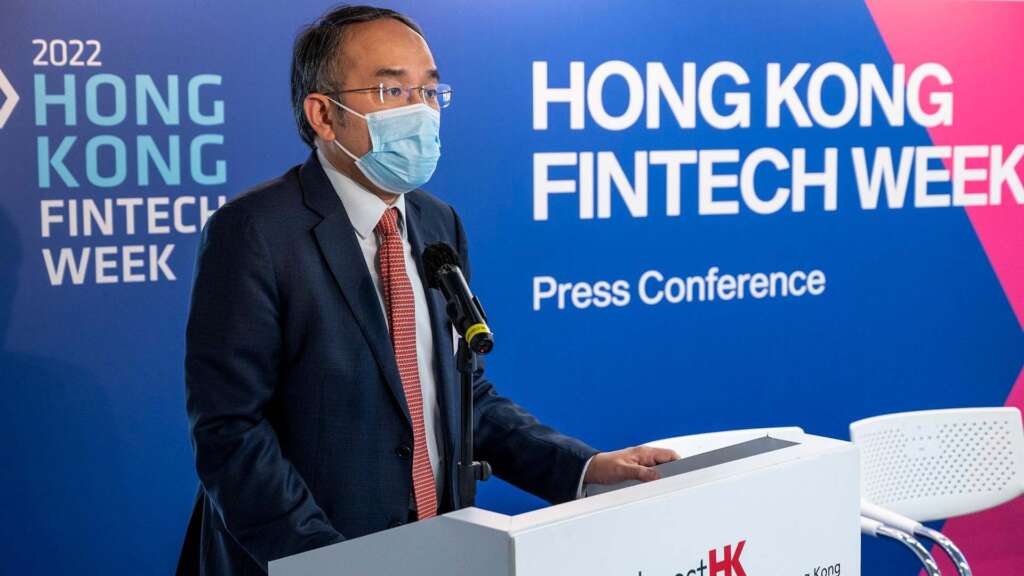
In the roaring 2020s, the explosion of innovation and breakthroughs have pushed businesses to make multiple strategic changes. Web 3.0, for example, is one of the most prominent reasons for such massive transformation. Wondering how Web 3.0 is reshaping diverse sectors? Let’s check out the top 12 Web 3.0 application examples across industries prepared by Preface!
What is Web 3.0?
What started as a shoddy service in the 60s has now become a truly inseparable part of our daily life. In just a few decades, there has been wave after wave of breakthroughs in the internet industry, for example, Web 3.0.
Web 3.0, also known as the third generation of the internet, is devoted to building a more decentralised, open and valuable online ecosystem. Simply put, the core principle of Web 3.0 is to liberate us from a handful of global technology giants by changing how we access, store and use information. With the help of advanced technologies such as smart contracts and blockchain, Web 3.0 is believed to be a real game-changer in the near future.
Reference: The European Business Review, Forbes
Read more:NFT: What is it? Why is it shaking up the Art World?What is Cryptocurrency? All you need to know about Bitcoin and Blockchain TechnologyMore than a game: Everything you need to know about MetaverseIntroducing Cyber Security and Its Online CoursesWhat is XR? All you need to know about Extended Reality
How can Web 3.0 benefit businesses?
The benefits of Web 3.0 have already gone well beyond a nerdy fantasy. Below has outlined some examples of benefits that Web 3.0 can bring to a business:
Higher Transparency
Given that Web 3.0 relies heavily on blockchains, every piece of data is transparent and easily traceable to everyone at any time.
For example, in the case of Bitcoin transactions, details of whoever involved such as their wallet address, amount sent and received and date will be shared publicly in a permissionless ledger and become globally visible, in other words, there is no room for counterfeiting since Web 3.0 allows users to identify provenance all the way down to the origin, ensuring utmost transparency.
Improved Security
High transparency doesn’t equal guardless. During the development of Web 3.0, engineers take security into consideration every step of the way.
In the current centralised Web 2.0, our personal data is dictated by a handful of tech giants. For example, very often, our information is sold to advertising agencies without us knowing in advance. With an aim to achieve real autonomy, Web 3.0 seeks to make sure users’ data is opaque and identity is decoupled from the data itself. Also, thanks to the open blockchain, users can clearly monitor who has access to their data and what type of access they have.
Better Accessibility and Searchability
Web 3.0 is mostly based on semantic web technologies, which is conducive to a more intelligent and accessible search model.
For example, the semantic search of a keyword like “coding course” might include:
Bootcamp
Coding for kids
Programming for beginners
With the ability to interpret the meaning and intent behind a specific keyword phrase, Web 3.0 is expected to render answers of higher accuracy and preciseness, creating a more personalised experience for each visitor.
Automated Business Processes
At its core, Web 3.0 adopts a mix of artificial intelligence, machine learning and smart contracts, and all of these allow businesses to cut down on repetitive tasks while providing enhanced efficiency in handling the routine process.
Take insurance processes such as underwriting and payouts as examples. Traditionally, insurance companies have to hire specialists to fill in documents and reconcile errors one by one. But thanks to the self-executing feature of smart contracts, no more paperwork is needed. Once the condition is met, the smart contract will automatically carry out the preset actions on its own. Since the majority of executions are processed automatically by a machine instead of manually by an individual, Web 3.0 can dramatically speed up a wide range of business processes.
Absence of Third-party Intermediaries
Speaking of smart contracts, another great thing about Web 3.0 is that no additional intermediary is required.
In the world of Web 2.0, many online activities need third-party involvement. For example, when sending money abroad, both sender and payee have no choice but to route through costly and slow banking rails. However, as we are entering the new era of the internet, these procedures will be much less daunting given that Web 3.0 enables peer-to-peer transactions without intermediaries, meaning users can without paying extra handling fees charged by traditional remittance services.
Cheap and Flexible Infrastructure
Decentralisation also allows businesses to enjoy lower infrastructure setup and maintenance costs without sacrificing performance.
For example, rather than purchasing an on-premise server or data centre, businesses can simply outsource the consuming jobs such as data storage and resource provisioning to different service providers, one each to perform the appropriate task on the separate nodes. On top of cost reduction, Web 3.0 also brings the advantage of flexibility as businesses can run applications on distributed infrastructures through a pay-as-you-go subscription plan.
Streamlined Customer Relationships Management
There is always information customers wish to keep private and unrevealed, examples include but not limited to age, gender, job title, linked organisations and even annual income.
However, one man’s secret is another man’s insight. Especially in today’s digital age, businesses’ marketing intelligence greatly depends on various customer data types. Fortunately, Web 3.0 allows businesses to gather the target audience’s information without violating user privacy since data is designed to be fully anonymous unless the owners decide to disclose it. This data can be very helpful in enhancing businesses’ services and products for a better customer experience.
Reference: The European Business Review, Maxinai
Read more:The Top 5 Metaverse Platforms in 2023 to Watch Out forBest movies about the metaverse – from 90’s to 202311 Biggest Tech Cities in the World
5 Advantages of Web 3.0
Decentralisation
Obviously, the biggest advantage of Web 3.0 is the absence of a centralised authority. By eliminating middlemen, people can exchange their data without losing ownership or being jeopardised. Therefore, internet users will be more comfortable with data exchange since they are given a higher level of freedom when managing and controlling their personal information, which in turn benefits businesses in various ways.
Autonomous
By autonomous, it means the decision-making power has been shifted from the market leaders such as Meta (Facebook) and Google towards the individual internet users. Not only can users win back the torch of digital sovereignty, but they can also become active stakeholders in the communities all across Web 3.0 and jointly strive for their common goal.
Permissionless
If you have ever tried submitting an application to a governing body, you must know how time-consuming it is to wait for the approval. In response to this conundrum, Web 3.0 is designed to create a more equitable environment for whoever is involved. No matter if you are on behalf of some big brands or just a normal net surfer, you can easily exchange money or products without seeking authorisation from a centralised party, achieving a more democratic version of the current internet.
Open-source
Another key pillar of Web 3.0 is the fact that it is publicly accessible, which means anyone can view and edit its design. To be exact, Web 3.0 is a combination of countless open-source software, this way, it enables the entire digital communities to create, build and scale the network together.
Anti-fraud
Web 3.0 can also reduce fraud because it enables information sharing in real-time and details of every single transaction is viewable across the internet. Nonetheless, Web 3.0 protects data with advanced encryption techniques, therefore, although sensitive data is stored on public networks, it can only be retrieved by the key owners, tightening digital security and avoiding fraudulent actions.
Reference: Expert.ai, Analytics Steps, Lizard Global
12 Web 3.0 Examples by Industry
Banking
BitMari
BitMari is a payment platform that has recently partnered up with the Zimbabwe Bank of Agriculture to offer innovative financial services to pan-Africans. Adopting the Web 3.0 concepts, users can easily make payments online and offline without having to install any banking infrastructure.
Algorand
Algorand is devoted to bridging the gap between Web 3.0 and the finance sector. It merges the latest Web 3.0 technologies such as smart contracts and cryptocurrencies to offer extremely fast transactions, and more importantly, the handling fee is as low as 0.001 $ALGO (~ USD$0.0049) only.
Everledger
Everledger serves as an asset and supply chain company that can provide secure and permanent digital records to every user. Since it guarantees the origin, characteristics, ownership as well as access rights according to customers’ unique profiles, it helps protect banks and users from malicious activities.
Data Storage
Filecoin
Filecoin is an open-source storage service provider that aims to reward clients at multiple levels. Not only does it have a monetisation system that gives users Filecoin according to the storage they have added, but it also has high-bandwidth connections to ensure quick data retrieval.
web3.storage
Building on Filecoin, Web3.storage helps clients to store data and content on distributed nodes cryptographically. Developers can take advantage of the openness of the decentralised web and flexibility of infrastructure by determining how to retrieve their data as they wish.
Anmai Cloud
Anmai Cloud is committed to building a new type of Web 3.0 infrastructure that can revolutionise the data storage industry. With an aim to resolve the privacy and security issues, it adopts a decentralised storage model and advanced encrypted service to ensure a stable and reliable user experience.
Messaging
ySign
As a DApp, also known as a decentralised application, operated on the blockchain, ySign hopes to create a 100% free, secure and anonymous messaging experience for users.
Matrix
Matrix defines itself as a decentralised messaging ecosystem aiming to address the problem of fragmented IP communications. Its ultimate goal is to make communication a free and open, unencumbered, standard and global network for all.
Secretum
Secretum is a messaging network based on the Solana blockchain. All conversations are completely encrypted and stored on distributed nodes, moreover, the sign-up process only requires a crypto wallet address, which means users don’t have to compromise their personal details.
Social Media
Minds
Minds is one of the leading decentralised and encrypted social platforms. Hoping to build a solid community, Minds decided to launch $MIND to encourage content creation and sharing.
Steemit
Steemit is another social platform and blogging site built on blockchain. It puts a heavy focus on Web 3.0 concepts including decentralisation, freedom and privacy. On the other hand, it has a reward system which allows users to gain $STEEM for sharing content.
PeerTube
PeerTube is a free and open-source video-sharing and social media platform empowered by Web 3.0 related technology. With its peer-to-peer protocol, the loading time can be greatly reduced and streamers can broadcast viral videos without worrying about bandwidth overload.
Reference: 101Blockchains, Appinventiv, Entrepreneur
Read more:Guide To Become A Data Scientist In Hong KongA Guide to Become a UX/ UI Designer in Hong KongAn introduction to Slasher and Slash CareerHow to be a Digital Nomad in 2023? Here are 5 things you need to know








